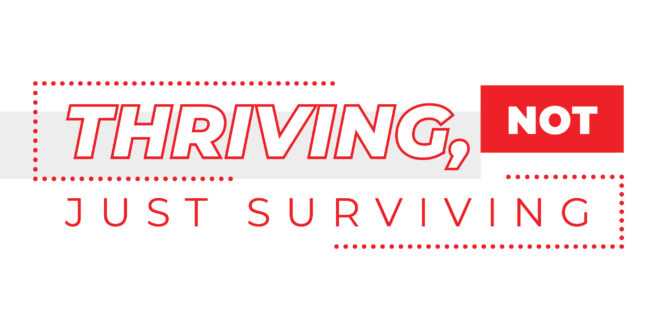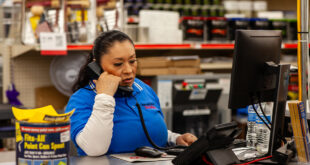As the former college football coach and current sports analyst Lou Holtz once said, “In this world you’re either growing or dying, so get in motion and grow.”
The same adage holds true for the independent home improvement channel. If you’re not growing, you’re likely getting complacent or even worse, declining. But don’t panic—growth comes in different forms and methods, and one operation’s goals for growth do not have to match another’s objectives. What matters is that you are growing or making plans to grow.
According to projections from the North American Hardware and Paint Association’s 2024 Market Measure Report, the home improvement industry will experience a compound annual growth rate of just 1.3% through 2027. Organic growth will be harder to come by in the next few years, and retailers will need a growth mindset and ironclad growth plans to succeed.
Gathering input from around the industry and from retailers of all sizes and affiliations, Hardware Retailing compiled five common growth challenges retailers are facing and shares ways they are overcoming these obstacles to expand the channel. From not knowing where to start to not wanting to grow too fast, these retailers share how embracing what you know, creating scale and remaining committed to customers can help accomplish growth goals both big and small.
1. I don’t know where to start.
As you look to grow, start with the needs of your customers and your local market. Seek out opportunities to provide something others currently don’t offer. Rely on what you know and build on past successes in growth, no matter how small.
For Dave Ables—who owns Three Sons Hardware in Big Lake, Minnesota, with his wife Lori—the path of growth took on a decidedly nonlinear path, from Ohio to Minnesota, from selling only hardware to operating a store with hardware plus a lumberyard.
For the majority of his career, Dave was a corporate executive in transportation and moved the family frequently for jobs. By 2012, when the Ables’ sons were in grade school, they were looking for something to ground their family, so they purchased a hardware store in Minerva, Ohio.
Not long after, Dave was once again promoted and transferred to Arkansas. The family kept the store for a year after moving, but it ultimately became too much traveling back and forth, and they sold it to Busy Beaver Home Improvement Centers in 2019.
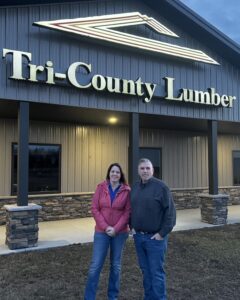 After selling the Ohio store, Dave and the family made another move, this time to Minneapolis. After the move, Lori was itching to get back into the hardware business, leading the couple to purchase a hardware store in 2022 in Big Lake, which became Three Sons Hardware. The couple immediately began looking for opportunities to buy more stores to expand their operation. Dave found Tri-County Lumber and saw a lucrative opportunity. It offered the Ables a chance to scale their business in a new way, provide products and offerings not currently available to their audience and bring in new customers.
After selling the Ohio store, Dave and the family made another move, this time to Minneapolis. After the move, Lori was itching to get back into the hardware business, leading the couple to purchase a hardware store in 2022 in Big Lake, which became Three Sons Hardware. The couple immediately began looking for opportunities to buy more stores to expand their operation. Dave found Tri-County Lumber and saw a lucrative opportunity. It offered the Ables a chance to scale their business in a new way, provide products and offerings not currently available to their audience and bring in new customers.
“We sold our store in Ohio to Busy Beaver, which operates stores with a small hardware store footprint and building centers that have both hardware and lumber,” Dave says. “That concept intrigued me, and I thought it would be one we could make successful.”
Bringing a hardware and a lumber operation together has benefited both sides, Dave says. The Ables are working on adding a kiosk to the Three Sons Hardware location where customers will be able to see the lumber and building products and services available through Tri-County Lumber. Customers will be able to place orders through the kiosk and have everything directly shipped to their homes or to Three Sons Hardware from Tri-County Lumber.
For the Tri-County Lumber location, having access to hardware and home improvement products and services that lumberyards don’t typically carry helps the operation’s contractor customers. Dave says Tri-County Lumber has over 200 pro customers who can now shop on the Three Brothers Hardware e-commerce website and have products transferred to Tri-County for them to pick up there. This location also has a small section in the store stocked with power tools and other hardware items.
In terms of revenue and deliveries, Dave says the lumberyard does the same amount of sales in a week that the hardware store does in a quarter, but he appreciates the challenge.
“Having the partnership between the two stores is going to be an additional revenue stream for both operations,” Dave says. “We see good synergy there, and it will also give us a platform that as we grow and scale more smaller hardware stores, we can also provide building products and services.”
The Ables’ five-year goal is to operate 10 hardware stores that are 8,000 to 10,000 square feet and several 30,000 to 40,000-square-foot building centers to complement the hardware stores.
“We’re not going to play in the cities where there are big boxes but rather want to target those markets underserved by the big-box retailers,” Dave says. “When it comes to growth, we’re going to do it in a way that benefits our customers.”
A major contributor to the success of your growth strategy is building a team to support your goals. The Ables named their hardware operation Three Sons Hardware for their three sons, David, Sam and Nicholas, who they hope will one day take over the company. Currently, David works as a store manager at the Big Lake store, Sam is taking industry-related classes and working at Tri-County Lumber and Nicholas just graduated from high school.
Dave says he has identified several key players from Tri-County Lumber who he wants to tap into for leadership roles, and he will continue building his bench. Also key will be uniformity across all locations in terms of processes, employee compensation and benefits.
“Throughout my corporate career, I led teams at multiple facilities in varying regions of the country and have learned that communication and visibility are critical to ensuring team members working at off-site locations feel valued, informed and a critical part of the organization,” Dave says. “We’ll be sure our communication across all locations is the best it can be and we have leadership visibility across the board.”
Key Takeaways
- Start with what you know and grow from there.
- Lean into your customers’ needs to drive growth.
- Put a team in place who believe in your growth.
2. I am afraid to fail.
Unfortunately, like any part of business, growth comes with risks and the possibility of failure. However, learning from those missteps is one of the best ways to grow.
A modern-day jack-of-all-trades, Isaac Weber has embraced growth and evolution to build not one but a handful of successful businesses—and he’s still growing. He’s grown through trial-and-error and a willingness to step out in faith. Plus, he’s not afraid to fail but rather learns from those experiences.
Weber started farming in 2015 in Archbold, Ohio, and added an excavation construction company in 2018. In 2020, another business opportunity came along, and Weber and his wife Leslie opened Temple Gym & Fitness, a 24/7 fitness center.
Not long after opening the gym, Weber joined a Bible study with the owner of Lugbill Supply Center, the local hardware store. At one of the meetings, the owner mentioned wanting to retire, and Weber told him he would be interested in buying the store.
“Later that day, he called me into his office and told me his wife had been praying that some local young guy would have interest in buying this place,” Weber says. “She was praying at the exact time Dave and I were talking. Some people might call that a coincidence, but I still get goosebumps when I think about it. I knew right then that was what I was going to do next.”
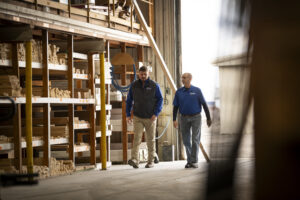 After that fateful meeting, for the next seven months, Weber worked on securing funding and closed on the deal in April 2022. From there it would be an uphill climb, but Weber was determined to succeed.
After that fateful meeting, for the next seven months, Weber worked on securing funding and closed on the deal in April 2022. From there it would be an uphill climb, but Weber was determined to succeed.
Along with having no experience in hardware, Weber had to overcome the perceptions of the business. Lugbill Supply Center had been a part of the small town for over 50 years, but the physical building had never been updated inside or out, and the operation catered mainly to contractors with little DIY traffic.
Immediately after he purchased the building, he was getting a haircut when his hairdresser, who had grown up in the town, told him she had never heard of the business.
“There are about 4,500 people in this town. I figured if she doesn’t know what this place is, I’m sure there are a lot more people who don’t know what the place is either,” Weber says. “That was a big motivating factor for me.”
He wasted no time remodeling the store in fall 2022, utilizing his wholesaler’s program that guides retailers in revamping stores.
“Our wholesaler had data showing how much we could increase foot traffic by undertaking a remodel,” Weber says. “I tried talking myself out of it because I knew it would be an expensive project, but I couldn’t get over how much it financially made sense.”
The remodel included replacing all the flooring and shelving, painting the ceiling and walls, updating the design center, refreshing the exterior and adding more space for lawn and garden. Weber more than tripled the size of his fastener section and brought in software so his staff could do takeoffs more quickly for their pro customers. He is also planning on bringing in more outside sales reps to serve his contractors.
To bring DIYers into his store, Weber doubled the size of his lawn and garden department, added new product lines like knives and ammunition and revamped the store’s custom kitchen design center. He extended the store’s hours, advertised through radio ads, Facebook and Instagram and updated the store’s website, including adding e-commerce.
The lawn and garden center is now 3,000 square feet, offering additional space for new products, including electric mowers and outdoor power equipment, and providing more depth within those product categories.
The updates paid off. Weber says they have seen an average of 400 transactions a month and the average ticket has increased 39% since he bought the store. In his first six months of ownership, Isaac grew sales by 15%. In 2023, he grew sales an additional 20%.
“The renovation showed people that our store exists. It’s drawing them in, and they can see everything we have and that there’s no reason to travel to shop,” Weber says. “I’m pretty excited to see what happens going forward.”
Weber has his sights set on additional locations and building his DIY audience even more. Archbold is a small town in rural Ohio and residents often have to travel 50 to 60 miles to Toledo or Fort Wayne, Indiana, to shop. With the updated store and his plans for future locations, many of those customers can shop locally instead, Weber says.
In March 2024, Weber purchased a small lumberyard in a neighboring town and he wants to continue to serve pro customers in the best way possible.
“Our store is about halfway between Fort Wayne and Toledo,” he says. “I have a rail spur that runs here on our store property in Archbold. If I can add smaller facilities in the area, I can use our store here in Archbold as a hub. I can buy train cars of lumber at better prices and distribute them to smaller stores in the area. I can also sell big packages for building projects.”
The road to growth hasn’t been all smooth sailing. Weber says he struggled with staffing and having enough capital to fund all his ideas—but that hasn’t deterred his vision. He has focused on internal processes like pricing, margins and quality of product, and has made sure internal structures are in place for growth. Weber hired a full-time merchandiser and a yard manager and is building an outside sales team.
He also asks a lot of questions.
“I will ask a question 10 different ways to 10 different people until I’m comfortable with something and it makes sense,” he says.
Weber says you just have to step out and be fearless.
“You can’t base everything on the what-ifs,” Weber says. “I still want to know about the what-ifs, but if I hesitated every time I heard somebody say something about our economy collapsing or something else going wrong, I wouldn’t get anywhere. You can watch trends, and should be wise to that, but be bold in your decision-making.”
Key Takeaways
- Rely on your wholesaler or co-op’s resources.
- Put effective internal processes in place.
- Ask lots of questions.
3. I don’t want to overextend myself or my operation.
Growth can look like adding additional locations or simply increasing sales in your existing location; growth can include hiring new employees or adding new product categories. Whatever it looks like, growth should mean staying true to your operation’s values and committed to customers. Brandon Donahue, owner of Westerly Paints Inc. in Westerly, Rhode Island, and Mystic Paints located in Mystic, Connecticut, began working in his father’s business as a child.
After graduating from Rhode Island College, he took over operations, and in July 2020, Donahue purchased a second location nine miles from the existing store. The additional location expanded his territory and increased profits by allowing for bulk purchases and the opportunity to join a buying group, making his stores more competitive and attractive to new customers.
“I always wanted to add another store, but what ultimately led me to the second location was how close it was to my first store,” Donahue says. “The strategy I had going into the multistore growth was to increase my territory to protect my store and expand to the neighboring communities.”
 While Donahue has found success in adding an additional location, he is content with stopping there for now and growing in other ways. Adding more product lines and expanding existing ones has been one road to growth. He is also working on adding new accounts in their current territory.
While Donahue has found success in adding an additional location, he is content with stopping there for now and growing in other ways. Adding more product lines and expanding existing ones has been one road to growth. He is also working on adding new accounts in their current territory.
“One lesson we’ve learned from growing in this way is not to sell against yourself,” Donahue says. “If you are making good margins and are familiar with the products you currently sell, there is no reason to start adding similar products to your store.”
Donahue is focusing on growing his staff and building a bench of employees so when the time comes to add another location, labor issues won’t hinder the growth. When Donahue opened the second location, he moved one of his top employees at the first store to manage the second one and gave him autonomy to hire his own staff. He hopes to repeat that process as they open additional locations.
“In 10 years, I would like to see us with a strong staff that can operate without me needing to be as hands on,” he says. “If I can spend more time in the office, it would keep things more efficient, and we wouldn’t have to worry about being short staffed when someone called out.”
Donahue is also concentrating efforts on building company culture and leadership. Each of the store’s managers is given freedom to create the culture they want at their location that also includes elements of the overall company culture.
“This strategy involves constant communication between me and the managers from our two locations to be able to blend their vision with mine,” he says.
No matter what growth looks like, Donahue says leading by example with hard work and an open line of communication between the store managers is key.
“Listening is important, but going a step further and implementing ideas from your staff and managers, even if you don’t fully agree with them, will help build trust and let your employees know you value their opinions,” he says. “Obviously, if you are really against an idea you need to do what is best, but sometimes if it is not going to harm the business, why not give it a try? Growth sometimes comes in surprising ways.”
Key Takeaways
- Keep customers’ needs as a priority during growth.
- Build a bench of leaders so you can focus on growth.
- Bring employees in on your growth strategies.
4. I don’t think creating scale will work for my operation.
One of the biggest benefits of physical growth and multiple locations is taking advantage of scale. Rather than linear growth, scaling your business allows you to expand without incurring significant additional costs. Scalable growth gives you the ability to spread out costs across your operation. As an additional bonus, additional locations and larger operations often lead to more buying power with wholesalers.
Breaking the stereotypes of what makes an independent home improvement retailer successful, Darren Tomasini has built a successful career and continued the legacy of his operation, Dazey’s Supply, where he serves as president and CEO. His accomplishments have come from embracing scalable growth for the operation.
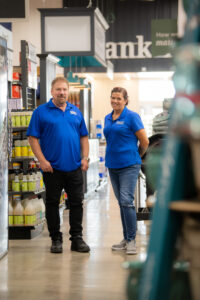 Stephen Dazey opened Dazey’s Supply in 1974 in Redway, California, when he saw an influx of residents to Humboldt County who were looking to live out their counterculture lifestyles and needed lumber and building supplies. He started milling lumber and selling refurbished windows, and with customer input, added hard-to-find and premium gardening tools and supplies.
Stephen Dazey opened Dazey’s Supply in 1974 in Redway, California, when he saw an influx of residents to Humboldt County who were looking to live out their counterculture lifestyles and needed lumber and building supplies. He started milling lumber and selling refurbished windows, and with customer input, added hard-to-find and premium gardening tools and supplies.
In 2015, an independently owned hardware store three miles away in Garberville, California, went up for sale. Tomasini says they originally bought it so another competitor wouldn’t, but that purchase ended up being a springboard for expansion. The operation has since grown from those two stores in Redway to three additional locations in California, two stores in Oregon and a new store in Bluffton, Indiana.
While the move from the West Coast to the Midwest may seem random, when approached with the opportunity to buy in Indiana, Tomasini did his research and liked what he saw. The community was growing rapidly, and there was potential in the nearby Ohio market, which fit into Tomasini’s growth strategy of operating several stores in a central area to help with scale and provide support to one another.
“The store in Bluffton is located next to a Lowe’s and a Walmart—I love that,” Tomasini says. “Those are major companies that don’t put in a store unless they know the parking lots are going to be full. All I have to do is get those customers to choose to come to my store instead.”
Once a new location works out, Tomasini says he searches within a 100-mile radius for two or three more locations so each location can support the other. The company wants to establish clusters all across the country and build a network of stores nationwide.
“Our philosophy for growth is that we want three or four stores in a cluster so those stores can feed off each other,” Tomasini says. “It’s easier to buy better deals on inventory when you’re buying for a cluster of three versus one.”
Key Takeaways
- Take growth one step at a time.
- Consider outside-the-box ideas or areas for growth.
- Utilize scale to grow in a financially sound way.
5. I can’t control the economy, labor challenges or the weather.
The retail industry can sometimes feel like the wild west with constant changes, uncertainty and cutthroat competition. Rather than letting those fears get in the way of growth, retailers should look at the areas they can control.
Rocky’s Ace Hardware has been in business for nearly a century. In that time, it has remained family owned and operated and expanded to 50 locations in nine states. President and CEO Rocco J. Falcone II says Rocky’s has always been a growth-oriented company since the first location opened in 1926 in Springfield, Massachusetts.
“We are fortunate to have a succession plan. The multistore strategy has allowed us to grow geographically and financially, both top and bottom line,” Falcone says. “As our footprint has grown, we are able to meet the needs of other existing owners, customers, our associates and our own needs for growth. It is a win-win-win-win situation.”
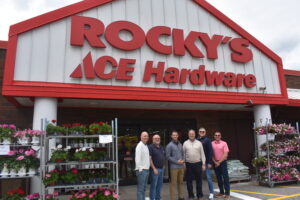 Like any retailer, Rocky’s Ace Hardware has faced its share of challenges that affect both sales and operational efficiencies, including external competition, economic uncertainty and changing weather patterns. Falcone says preserving consistency and controlling those areas they can control has been key to overcoming the challenges.
Like any retailer, Rocky’s Ace Hardware has faced its share of challenges that affect both sales and operational efficiencies, including external competition, economic uncertainty and changing weather patterns. Falcone says preserving consistency and controlling those areas they can control has been key to overcoming the challenges.
Another challenge during growth is maintaining a consistent roster of employees and assuring the company’s family values and helpful culture are seen across all locations, Falcone says. Finding quality employees isn’t something the company can always control, so it focuses on investing in people development, putting significant time and resources into finding, training and developing leaders in the organization who they empower and trust to operate their business units. The company holds an annual
Leadership Summit for all store and district leaders for nearly three days of learning, presentation and discussions.
For all employees, the company utilizes its wholesaler’s training platform and joins with brand partners to provide weekly virtual training, allowing them to discover more benefits on key products and services customers want.
“We are guided by our strategic plan, which is signed off by leadership and grounds all decision-making and actions across the organization,” Falcone says. “We want to develop our employees at all levels to grow and maximize their potential. Our leaders must own their culture and be totally accountable to our core values.”
Even when you can’t control everything and your growth leads to some failures, Falcone says those speed bumps can be excellent growth opportunities in themselves and a chance to learn. From adding product lines that have failed to opening stores that ended up closing, Rocky’s has seen numerous failures in its 98 years in business.
“Not all growth opportunities turn out to be financially successful, but they are always opportunities for learning,” Falcone says. “Whether it is a particular product or category expansion, or a new location that doesn’t meet expectations, we constantly review what our growth objectives are, where we achieved and where we fell short. This enables us to hopefully make smarter and more informed decisions as we continually evaluate opportunities for future growth.”
Leadership has learned to embrace failure as an opportunity to learn, grow and build a stronger foundation as a result of that failure, Falcone says.
“A lesson that we have learned is that success is not defined by your strengths, but rather how you are able to recover from your biggest failures,” he says. “We also learned that we should always be in a position to pivot, adapt and prepare to recover from failure. As a 98-year-old business, we have had to adjust our business model several times to continue to move forward.”
Key Takeaways
- Concentrate on the areas of your business you can control.
- Maintain your culture and values across all locations.
- Learn from your growing pains.
 Hardware Retailing The Industry's Source for Insights and Information
Hardware Retailing The Industry's Source for Insights and Information

